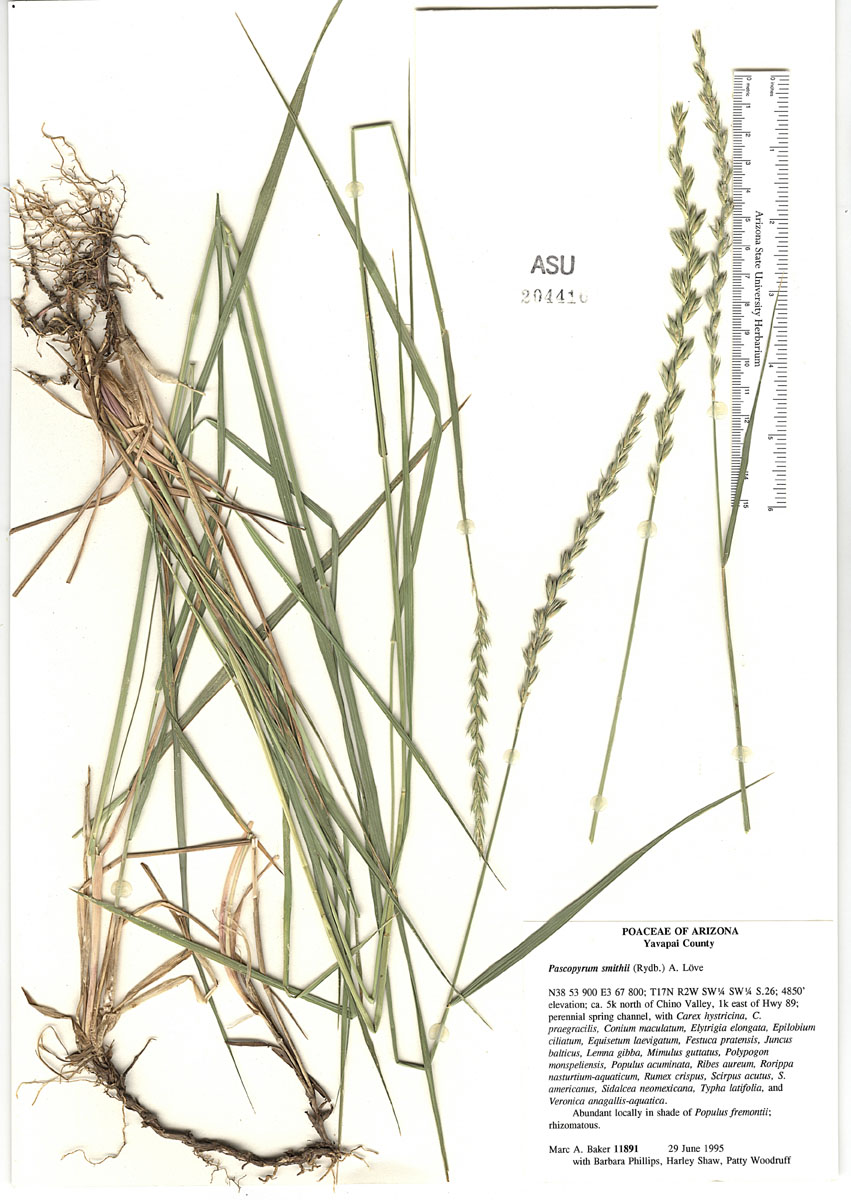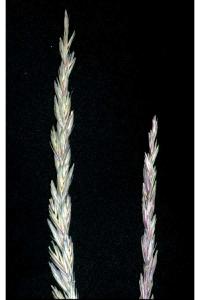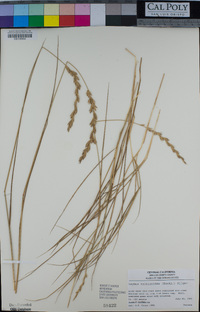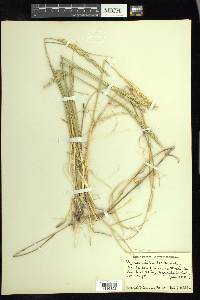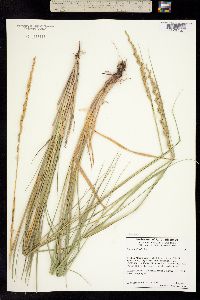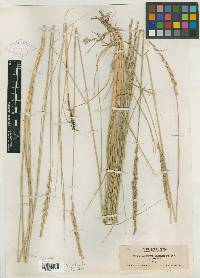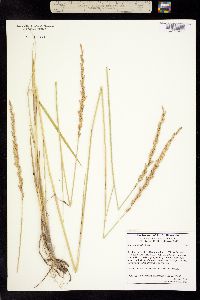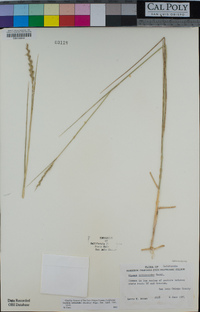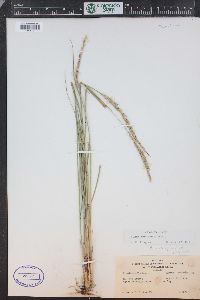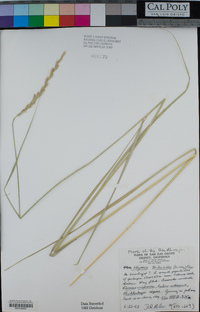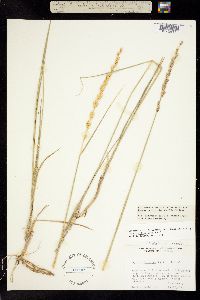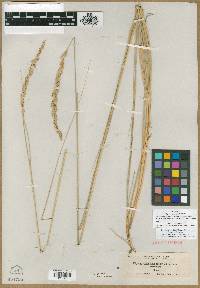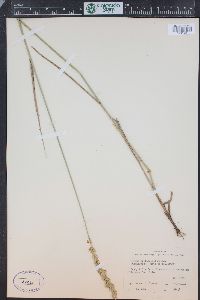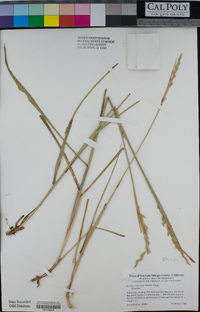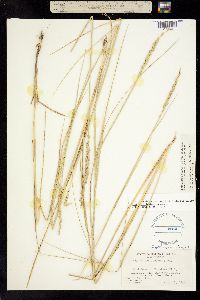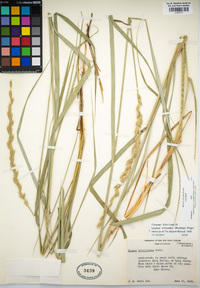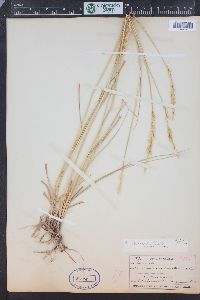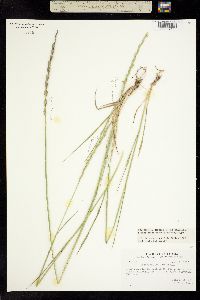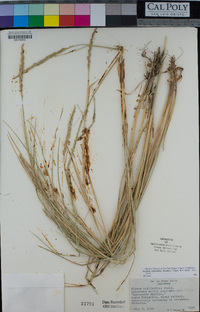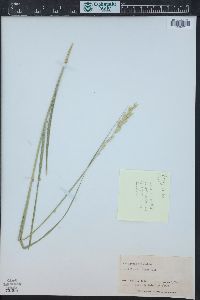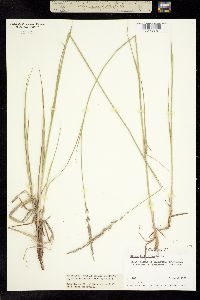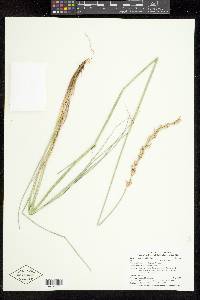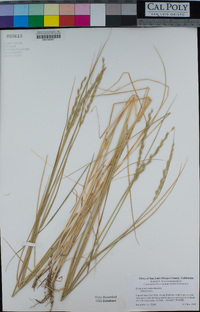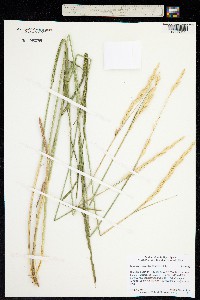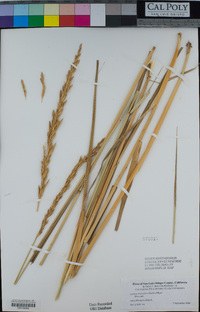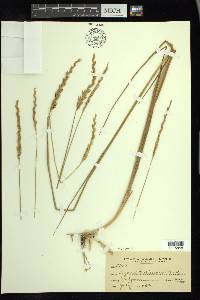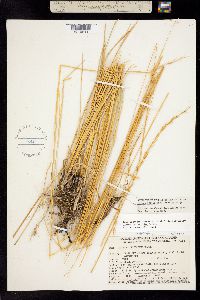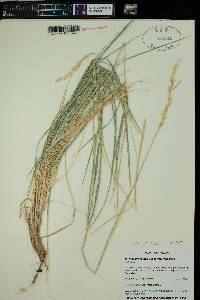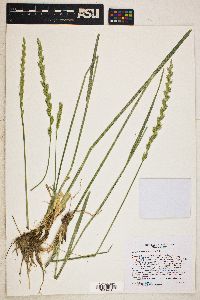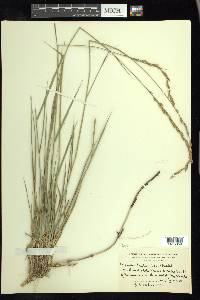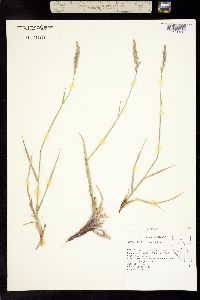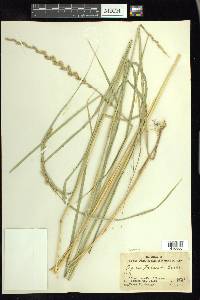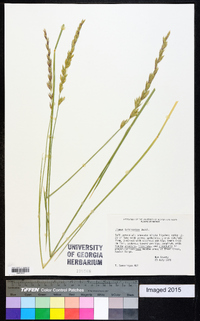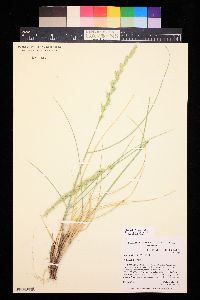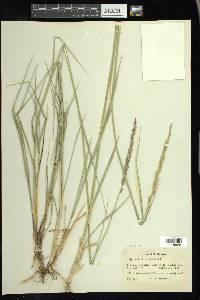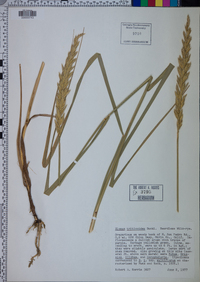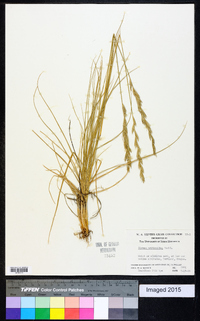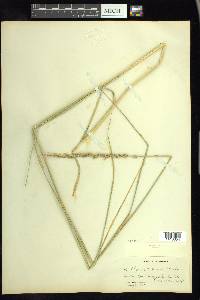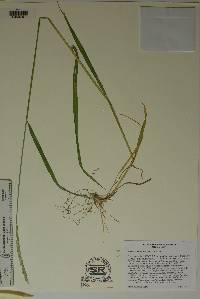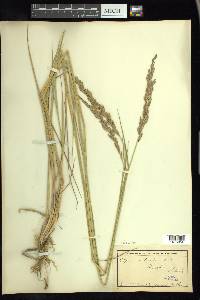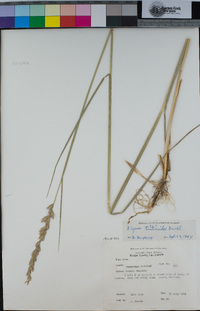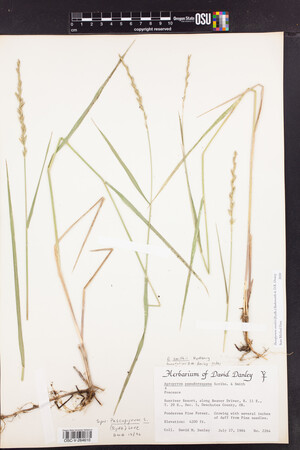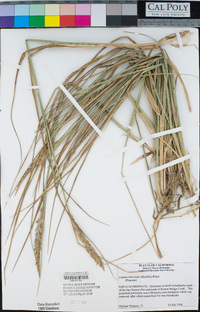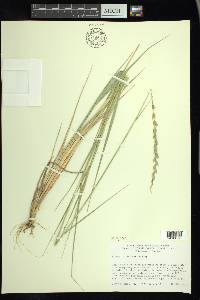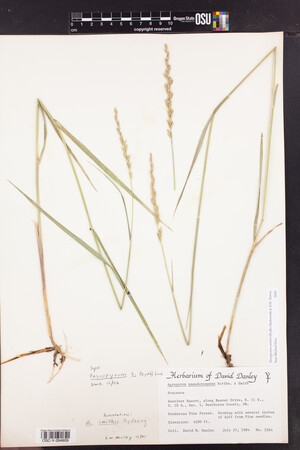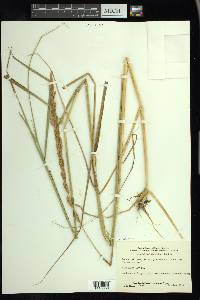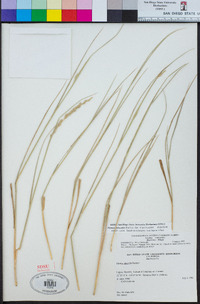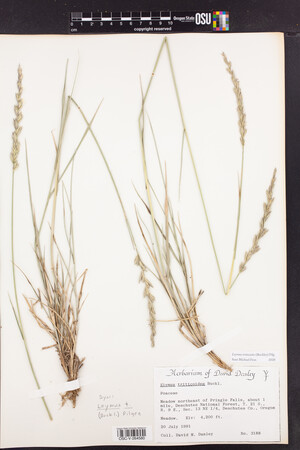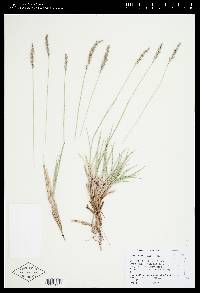Leymus triticoides
|
|
|
|
Family: Poaceae
Beardless Lyme Grass, more...beardless wildrye, creeping wildrye
[Elymus acicularis, moreElymus condensatus var. triticoides (Buckley) Thurb., Elymus orcuttianus Vasey, Elymus triticoides Buckley, Elymus triticoides subsp. triticoides , Elymus triticoides var. pubescens A.S. Hitchc., Elymus triticoides var. triticoides] |
Plants not cespitose, strongly rhizomatous. Culms 45-125 cm tall, 1.8-3 mm thick, solitary or a few together. Leaves exceeded by the spikes, often basally concentrated; sheaths glabrous or hairy, hairs 0.5-1 mm; auricles to 1 mm; ligules 0.2-1.3 mm, truncate, erose; blades 10-35 cm long, 3.5-10 mm wide, flat to involute, usually stiffly ascending, adaxial surfaces usually scabrous, often also sparsely hairy, hairs to 0.8 mm, most abundant proximally, veins 11-27, closely spaced, subequal, prominently ribbed. Spikes 5-20 cm long, 5-15 mm wide, with 2 spikelets at midspike, sometimes 1 or 3 at other nodes; internodes 5-11.5 mm, usually mostly smooth and glabrous, sometimes strigillose distally, edges ciliate, cilia to 0.4 mm. Spikelets 10-22 mm, with 3-7 florets. Glumes 5-16 mm long, 0.5-1.2 mm wide, bases not overlapping, glabrous and smooth proximally, scabrous distally, tapering from below midlength to the subulate apices, stiff, keeled, the central portion thicker than the margins, 1(3)-veined, veins inconspicuous at midlength; calluses usually glabrous, occasionally with a few hairs about 0.1 mm long; lemmas 5-12 mm, usually glabrous, occasionally sparsely hairy, hairs to 0.3 mm, apices acute, usually awned, awns to 3 mm; anthers 3-6 mm, dehiscent. 2n = 28. Leymus triticoides grows in dry to moist, often saline meadows. Its range extends from southern British Columbia to Montana, south to California, Arizona, and New Mexico, but its populations are widely scattered. It is not known from Mexico. There is considerable variation within the species, but no pattern of variation suggesting the existence of infraspecific taxa is known. It is very similar to L. multicaulis, strains of which were initially released as L. triticoides by the U.S. Department of Agriculture. The most consistent differences between them appear to be in the venation of the leaf blades and the vestiture of the calluses. Leymus triticoides is also very similar to L. simplex, differing from it in the number of spikelets at the midspike nodes. Leymus triticoides hybridizes with other species of Leymus; hybrids with L. mollis-are called L. -vancouverensis, those with L. condensatus-are called L. -multiflorus. Hybrids with L. cinereus-are known, but have not been formally named. Plants identified as Elymus arenicolus Scribn. & J.G. Sm.-are here included in L. flavescens, but may represent hybrids between L. triticoides and L. flavescens. Jepson 2012, Kearney and Peebles 1969 Common Name: beardless wildrye Duration: Perennial Nativity: Native Lifeform: Graminoid General: Perennial grasses from slender, creeping rhizomes; stems to 1 m or more, solitary or a few together (not growing as a bunchgrass), usually glaucus, with glabrous nodes. Vegetative: Leaves concentrated toward the bottom of the stems; blades flat or rolled, stiffly ascending, 10-35 cm long and 3-6 mm wide, upper surfaces finely scabrous; sheaths glabrous or hairy; auricles to 1 mm long; ligules 0.2-1.3 mm, truncate, erose. Inflorescence: Spikes 5-20 cm long, the axis generally remaining intact with age; spikelets ascending, 1-3 per node but commonly 2 per node, somewhat irregularly placed on the axis; spikelets compressed laterally, with 3-7 florets, disarticulating above glumes and between florets; glumes 5-16 mm, awl-like; lemmas rounded, 5-12 mm long, 5-7-veined, awn-tipped; awns straight or curved outward, to 3 mm long. Ecology: Found in dry to moist, often saline, meadows, from 2,500-8,500 ft (762-2591 m); flowering June-July. Distribution: From British Columbia south to Texas and West to New Mexico, Arizona, and California. Notes: This short-awned Leymus is distinct for its strongly rhizomatous growth form, with stems emerging from the ground singly or in small clusters. Look also for the stiff, glaucous (blue-green, slightly waxy) leaves and the straight, narrow flowering stalk with a pair of spikelets at most nodes, though some nodes have 1 or 3 spikelets. The spikelets have 3-7 alternately stacked florets, each with a small awn less than 3 mm long. Similar to Pascopyrum smithii but in that species the leaf blades are involute (with rolled edges), and the spikelets are larger, with 5-12 flowers, compared to L. triticoides, which has 3-7 flowered spikelets. Also similar to Elymus trachycaulus but that species is a bunchgrass and the flowering stalks have only 1 spikelet per node. Ethnobotany: Seeds cooked and eaten as a grain; used as fodder for livestock, and the stems used for basketry. Etymology: Leymus is an anagram of Elymus, which all Leymus spp. were formerly classified as, and which was an ancient Greek name for millet; triticoides means like genus Triticum, or wheat. Synonyms: Elymus triticoides Editor: LCrumbacher2012, AHazelton 2015 |

